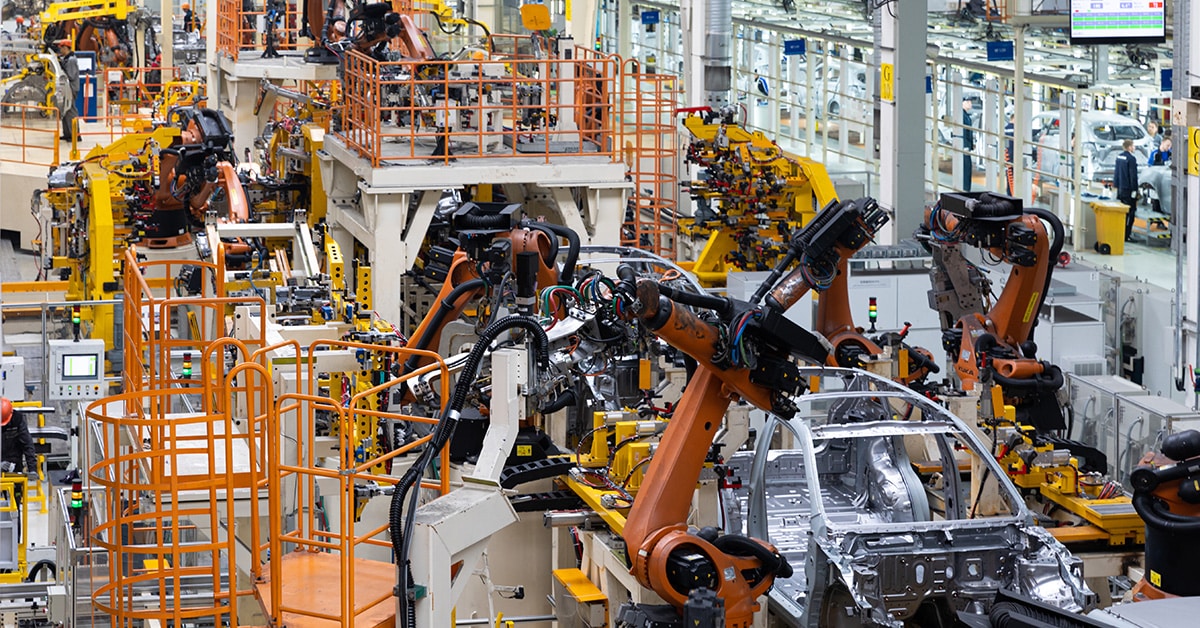Uneven customer demand creates significant challenges for manufacturers: increased overtime, excess inventory, and wasted labor, among other obstacles. Many organizations try to fight these fluctuations with reactive scheduling, often creating more chaos than clarity.
Instead, production leveling — or Heijunka — offers a proactive solution rooted in Lean manufacturing. Developed within the Toyota Production System, production leveling addresses the issue of inconsistent demand by evenly distributing production volume and product mix across time.
The production leveling approach stabilizes output, enhances quality, and minimizes waste. Compared to the reactive “firefighting” approach, level loading helps organizations operate more predictably and profitably. To fully understand the value, it’s helpful to explore how Heijunka works on the shop floor.
Heijunka fundamentals
Heijunka isn’t a made-up word; it’s a foundational Lean concept that supports Just-In-Time production by balancing workload across processes.
Unlike Kanban, which focuses on inventory replenishment, or takt time, which synchronizes output with customer demand, production leveling concentrates on sequencing and volume consistency. It works by smoothing out the peaks and valleys in production demand, creating a more predictable production process.
A few key elements define Heijunka implementation:
- Heijunka Box, a visual scheduling system that distributes production orders by volume and mix.
- Pitch, the standard interval at which work is released.
- Mixed-model sequencing, which blends product types on the same line—essential in high-mix, low-volume environments.
For example, rather than batching 500 units of Product A on Monday and 500 units of Product B on Tuesday, a level production schedule might call for producing 50 of each every day, reducing bottlenecks, changeovers, and overproduction. Maintaining alignment with takt time makes sure that a leveled approach still meets customer demand without overburdening resources.
Why production leveling matters today
The modern manufacturing environment is defined by volatility — short product life cycles, spikes in customization, and global supply chain disruptions. As a core principle of Lean production, leveling helps manufacturers focus on value-added activities.
Adopting leveled production allows manufacturers to:
- Reduce reliance on last-minute overtime
- Improve equipment uptime by enabling predictive maintenance
- Minimize the need for excess inventory and expensive safety stock
These benefits stretch far beyond operations; stable scheduling enables smarter workforce planning, improves quality, and strengthens plant performance. When workloads are leveled, maintenance teams can align service windows around predictable takt intervals. Consistency also supports MRO parts management by reducing emergency repairs and allowing teams to stock only the parts needed to support stable, scheduled maintenance.
Key benefits of production leveling
When done right, production leveling yields measurable results across core KPIs:
- Lower work in progress (WIP) and finished goods inventory, reducing working capital
- Increased first-pass yield through reduced variability and fewer changeovers
- Higher employee morale from predictable schedules and fewer last-minute shifts
- Better capacity utilization, often deferring the need for capital investment
- Enhanced overall equipment effectiveness (OEE) by optimizing runtime and changeover balance
Even better, OEE gains contribute to long-term cost savings and customer satisfaction.
Implementation roadmap
Transitioning from traditional scheduling to production leveling requires a phased, cross-functional approach. Effective manufacturing planning is essential during this period, ensuring that each process aligns with the leveled schedule and long-term capacity goals.
Here’s a simplified roadmap to guide your efforts:
- Start value stream mapping and determine takt time.
- Segment SKUs by demand frequency and production complexity.
- Design a leveled schedule using a Heijunka box or a digital Advanced Planning & Scheduling (APS) system.
- Synchronize logistics, suppliers, and maintenance with the new rhythm.
- Launch a pilot line, gather real-time data, and iterate.
- Use Kaizen events, training, and change management to scale company wide.
By following this roadmap and aligning teams early, manufacturers can shift from reactive firefighting to a more streamlined, level production system.
Production leveling checklist
Establishing a regular review cadence is essential for sustaining the gains achieved through production leveling. Here’s how to maintain a level production schedule:
- Daily: Check schedule adherence and log deviations.
- Weekly: Validate forecast accuracy and adjust the pitch if demand shifts by more than 10%.
- Monthly: Audit scheduling logic and recalibrate takt time based on product changes.
- Quarterly: Re-segment SKUs and review supplier reliability.
- Annually: Refresh SOPs, conduct full value stream audits, and train new teams.
These routines ensure that production output remains predictable and resilient to external variables. By integrating checks into standard procedures, deviations can be detected early, ensuring operations stay aligned with strategic goals.
Digital tools & data requirements
Digital infrastructure amplifies the effectiveness of production leveling. By linking machines, systems, and data streams, manufacturers can respond faster to changes and maintain smoother production flow.
Real-time data and smart systems provide visibility and agility across production systems:
- Manufacturing Execution Systems (MES) integrate scheduling with floor-level execution.
- IIoT sensors track equipment health, changeover times, and throughput.
- AI-driven forecasting tools align inventory with demand trends.
- Dashboards monitor takt variance, schedule adherence, and production flow, providing insight into real-time production rate fluctuations.
And when paired with predictive maintenance sensors, these systems reduce downtime and extend equipment life.
From uncertainty to consistency: The power of production leveling
With unpredictable markets and rising consumer expectations, production leveling allows manufacturers to operate with stability, efficiency, and foresight. Implementing Heijunka gives organizations the power to reduce waste, align resources, and improve overall quality.
ATS helps manufacturers build and sustain leveled production systems through:
- Integrated system design and APS tools
- Digital transformation support
- Reliability-centered maintenance programs
- Cross-functional Lean training
Ready to level up your production? Connect with ATS to explore how we can support your journey.

